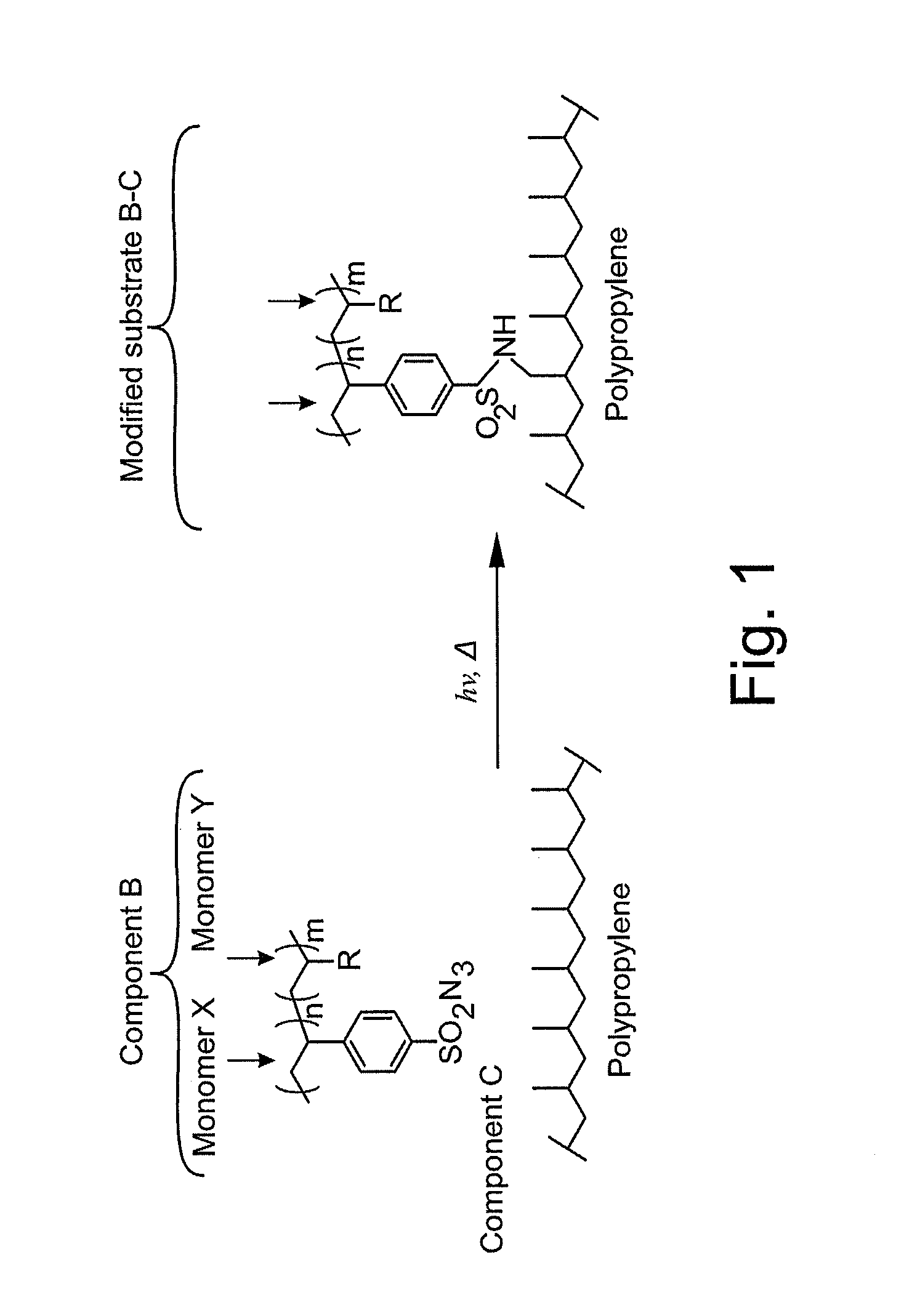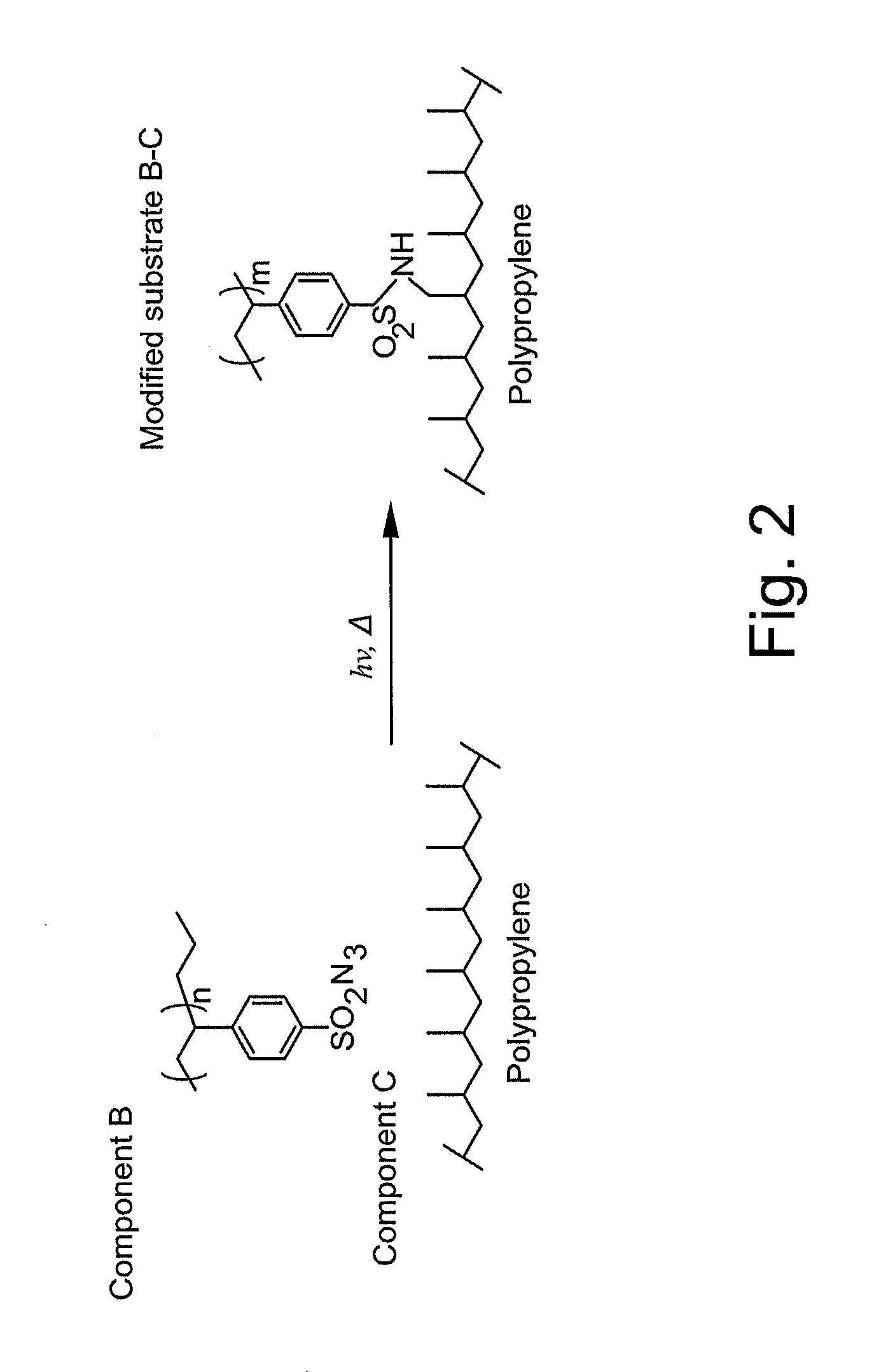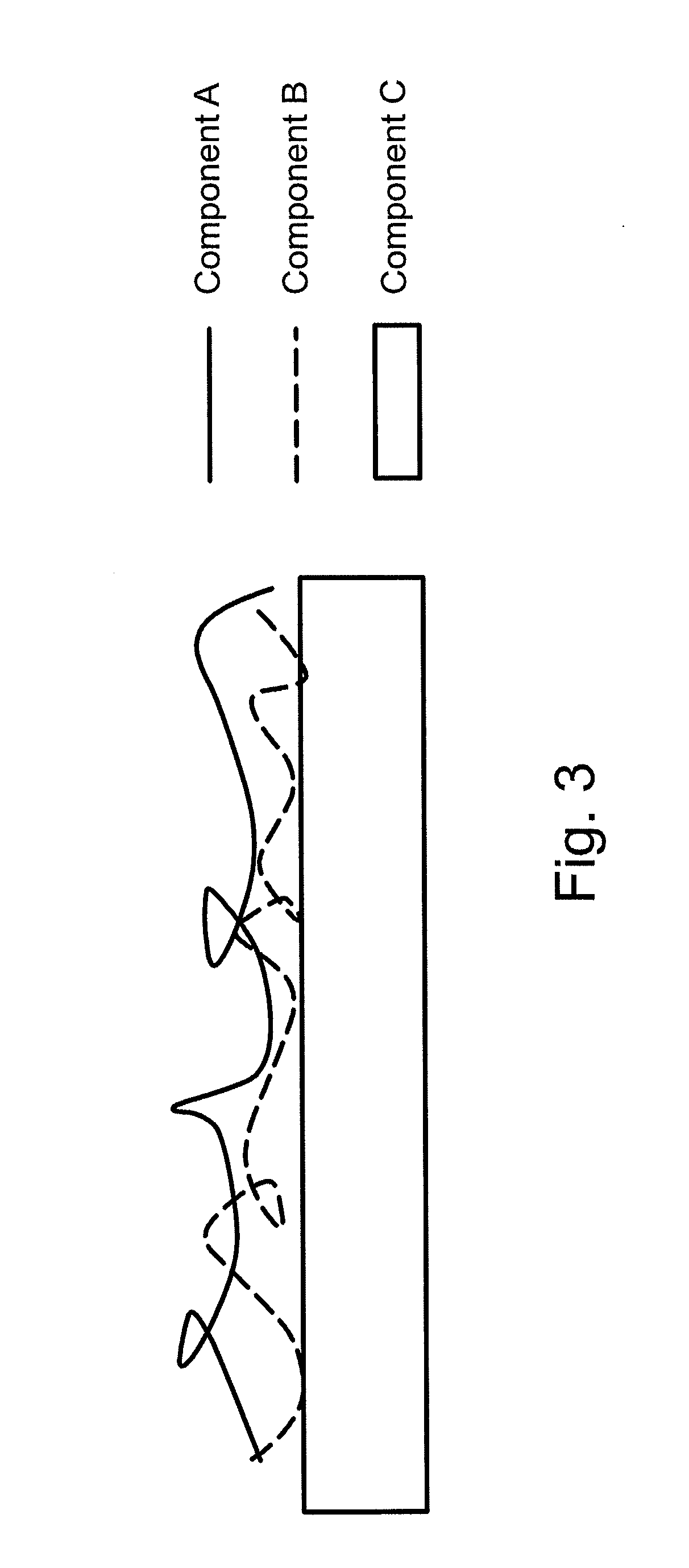Surface modifying agents, modified materials and methods
- Summary
- Abstract
- Description
- Claims
- Application Information
AI Technical Summary
Benefits of technology
Problems solved by technology
Method used
Image
Examples
example 1
Synthesis of 4-Styrene Sulfonyl Azide Monomer
[0123]In Example 1, the 4-styrene sulfonyl azide monomer was synthesized. Specifically, 34.4 grams of thionyl chloride (290 mmol) was added to a flask and chilled in an ice bath. 10 grams of sodium-4-styrene sulfonate (48.4 mmol) was added to the chilled thionyl chloride portion-wise while stirring. The solution was observed thickening into a slurry as the solids were added. 60 mL of DMF was added in 20 mL aliquots to maintain stirring and generate a homogeneous solution. The solution was stirred for 45 minutes in the ice bath, allowed to warm to room temperature, and then stirred for an additional 1-2 hours. Once complete, the reaction product was poured onto ice (about 200 grams), and the mixture was extracted with ethyl acetate (3×50 mL). The sulfonyl chloride layer was collected, dried over magnesium sulfate, and concentrated to 7.24 grams of a light yellow-orange oil.
[0124]The sulfonyl chloride (35.1 mmol) obtained from the previous ...
example 2
Synthesis of Styrene-Based Polymer Containing 4-Styrene Sulfonyl Azide
[0125]The sulfonyl azide monomer produced in Example 1 just above (1.5 grams, 7.1 mmol) was added to a flask with a variety of desired comonomers (described in more detail below) (7.1 mmol) with a chain transfer agent. Here, the particular chain transfer agent used was 2-cyano-2-propyldodecyltrithiocarbonate (28 mg, 0.08 mmol). An initiator (here, 4,4′-Azobis(4-cyanovaleric acid)) (42 mg, 0.15 mmol) was separately dissolved in DMF (3 mL) solution added to the polymerization flask. The polymerization flask was then sealed with a rubber septum and the solution sparged with nitrogen for 5 minutes. Next, the polymerization flask was put in a constant temperature bath at 60° C. for 5 hours. After the polymerization proceeded, the reaction was quenched by exposure to oxygen and precipitated in a suitable solvent to recover the sulfonyl azide polymer.
[0126]Comonomers that were polymerized with the sulfonyl azide monomer ...
example 3
General Activation of Sulfonyl Azide Polymers to Form Nitrene and Reaction with Substrate with UV Exposure
[0127]Formulation and activation of the sulfonyl azide materials was performed by dissolution in acetone with an appropriate polymer for the desired surface modification, typically in a 1:1-1:10 sulfonyl azide: functional polymer ratio by weight. The solution was applied to a substrate, and the solvent was allowed to dry. The resulting thin film and substrate were exposed for 15-45 seconds under a high intensity, long-wave UV spotlight, and rinsed again with acetone to remove any physisorbed materials. In some instances, good results were obtained at 254 nm wavelength UV cure.
[0128]The activated sulfonyl azide polymers were studied using various analysis techniques. By way of Example, FIG. 7 illustrates a graph of the FTIR spectrum of a polymer formed including about 50% monomer content of the sulfonyl azide monomer and about 50% monomer content of the 4-styrenesulfonate comonom...
PUM
| Property | Measurement | Unit |
|---|---|---|
| Hydrophilicity | aaaaa | aaaaa |
| Hydrophobicity | aaaaa | aaaaa |
Abstract
Description
Claims
Application Information
 Login to View More
Login to View More - R&D
- Intellectual Property
- Life Sciences
- Materials
- Tech Scout
- Unparalleled Data Quality
- Higher Quality Content
- 60% Fewer Hallucinations
Browse by: Latest US Patents, China's latest patents, Technical Efficacy Thesaurus, Application Domain, Technology Topic, Popular Technical Reports.
© 2025 PatSnap. All rights reserved.Legal|Privacy policy|Modern Slavery Act Transparency Statement|Sitemap|About US| Contact US: help@patsnap.com



